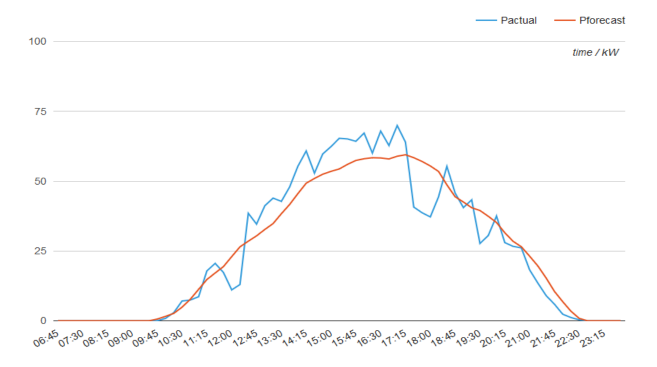Plan for a Secure and Reliable Solar PV System by Accurate Power Generation Forecasting

Increment of shortage of energy resources such as fossil fuels and environmental related concerns such as increment of carbon footprint have motivated humans to develop and utilize renewable energy sources to produce electricity. Moving into power generation through solar photovoltaic energy has become a nowadays trend in the electricity market. A rapid growth in solar PV technology and the industry is seen over the past several years due to less installation and maintenance costs, less pollution nature and enormous support and promotions given from the government. However, the intermittency, variability and randomness of PV power also cause huge grid fluctuations which limit its integration in the system. An accurate forecasting of solar power generation is essential and significant in order to optimize the operation and maintenance (O&M) schedules to manage the O&M activities properly as appropriate. Due to the uncertain nature of power output, accurate forecasting of power generation is very important in economic perspectives too. Solar power generation depends on various factors hence the necessity to forecast production is more critical. Due to PV power output showcase variability at all timescales, it is challenging and difficult to do predictions and forecasts accurately.
Solar PV generation forecast is simply based on solar irradiance which a particular location is receiving. PV production forecasting is mainly affected by the variability of the meteorological and climatological conditions which are varying throughout the day.

Forecasting can be done referring to a single PV system or to the aggregation of a number of solar PV systems spread over an extended geographic area. Forecasts can be focused either on the output power of solar systems or on its rate of change which is called as ramp rate. Accordingly, different forecasting methods are available. Forecasting methods also depend on the mechanisms and information available such as data from weather stations and satellites, PV system statistical data and results from numerical weather prediction (NWP) models.
Forecasting methods can be broadly classified as physical or statistical. The physical methods of forecasting use solar PV models to generate PV forecasts while the statistical methods are basically based on past data to train models which are having only a little or zero dependency on solar PV models.
Two basic methods of forecasting are in presence when considering intra – day forecasts. First approach is used for short-term (up to 6 hours) forecasts and the other is for the prediction of future generation from a solar power plant for a day or less than a day. Solar PV forecasting is more critical and challenging when it comes to day‐ahead forecasting which output power generated by PV systems within an area is forecasted for each hour of the next day or even up to few days ahead.
Variety of resources are used to perform solar PV forecasts which range from measured weather and PV system data to satellite and sky imagery observations of clouds, to numerical weather prediction (NWP) models that introduce modern weather forecasting.
It is very significant to review about the accuracy of the results of the forecasting. Possible maximum achievable accuracy is determined mainly by the factors such as local climate and weather conditions, single site or regional forecast, forecast horizon and accuracy metric used.
After analyzing all the forecasting approaches, the practical experience shows that the best method for predicting the solar PV power generation is to combine the forecasts obtained from different models of numerical weather forecasting. Thus, it is a fact that accurate forecasting leads more economically viable and reliable delivery of electrical energy to the consumers.
References
[1] Wang, Guochang, Yan Su, and Lianjie Shu. “One-day-ahead daily power forecasting of photovoltaic systems based on partial functional linear regression models.” Renewable Energy 96 (2016)
[2] Report IEA PVPS T14‐01:2013
[3] Seul-Gi Kim, Jae-Yoon Jung and Min Kyu Sim, Department of Industrial & Management Systems Engineering, Kyung Hee University, 1732 Deogyeong-daero, Giheung-gu, Yonginsi, Gyenggi-do 17104, Korea
[4] avenston.com
